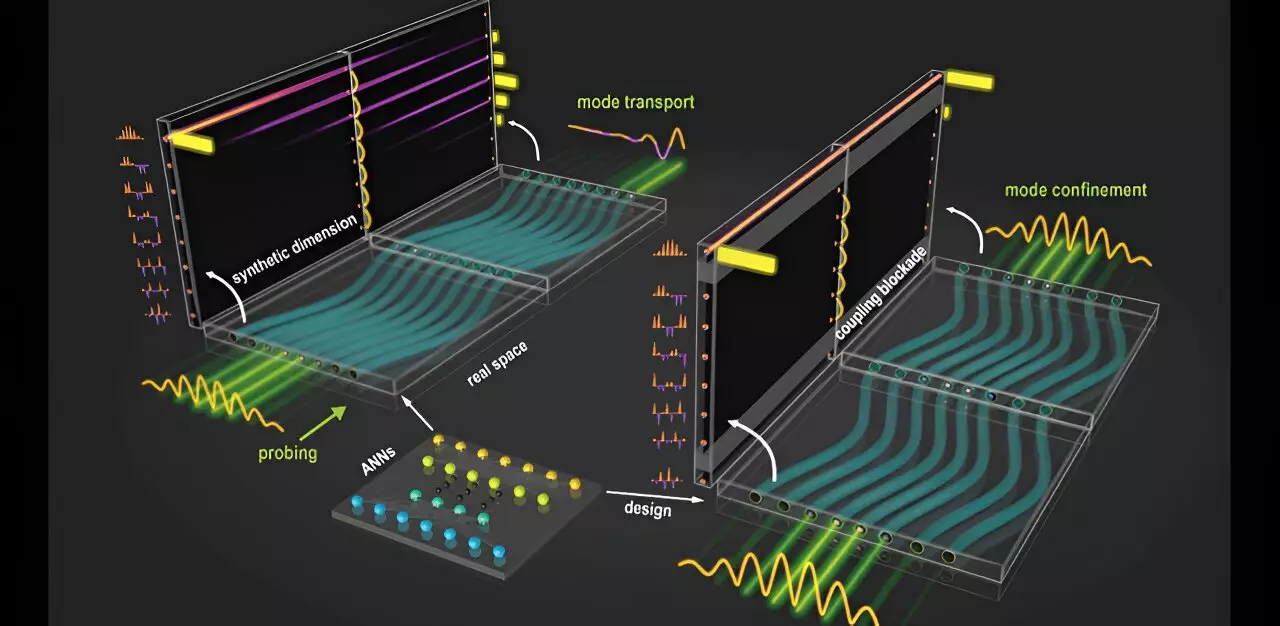In the world of physics, synthetic dimensions (SDs) have become a focal point of ongoing research, offering a gateway to explore phenomena in higher-dimensional spaces that extend beyond traditional 3D geometrical space. This concept has captured significant interest, particularly in the realm of topological photonics, due to its potential to unlock intricate physics that were previously inaccessible in standard dimensions.
Scientists have put forth a variety of theoretical frameworks to investigate and implement SDs, with the objective of harnessing phenomena like synthetic gauge fields, quantum Hall physics, discrete solitons, and topological phase transitions in dimensions of four or higher. These proposals have the potential to drive new foundational understandings in the field of physics.
One of the primary hurdles faced in the conventional 3D space is the experimental realization of complex lattice structures with specific couplings. Synthetic dimensions offer a viable solution by providing a more accessible platform for constructing intricate networks of resonators with anisotropic, long-range, or dissipative couplings.
The capability offered by SDs has already led to groundbreaking demonstrations of non-Hermitian topological winding, parity-time symmetry, and other phenomena. Parameters such as frequency modes, spatial modes, and orbital angular momenta within a system can be utilized to build SDs, showing promise for applications across various fields, ranging from optical communications to topological insulator lasers.
A crucial objective in the realm of SDs is the construction of a network of resonators wherein any pair of modes can be coupled in a controlled manner. Achieving this objective requires precise manipulation of modes within photonic systems, opening up pathways for enhancing data transmission, energy harvesting efficiency, and laser array radiance.
According to a recent report in Advanced Photonics, an international research team has designed customizable arrays of waveguides to establish synthetic modal dimensions. This breakthrough enables effective control of light within a photonic system, without the necessity for additional intricate features like nonlinearity or non-Hermiticity.
To modulate perturbations for propagations aligning with the discrepancies between different light modes, the researchers utilize artificial neural networks (ANNs) to devise waveguide arrays in physical space. The ANNs are trained to produce waveguide setups featuring the desired mode patterns, shedding light on how light propagates and gets confined within the arrays.
The study showcases the deployment of ANNs in designing a unique type of photonic lattice structure known as a Su-Schrieffer-Heeger (SSH) lattice. This lattice possesses a distinct feature that enables the topological control of light throughout the system, showcasing the exceptional properties of synthetic dimensions.
The implications of this work are substantial, as by fine-tuning waveguide distances and frequencies, the researchers aim to optimize the design and fabrication of integrated photonic devices. This breakthrough holds promise for applications across various domains, from mode lasing and quantum optics to data transmission.
The synergy of topological photonics and synthetic dimension photonics powered by ANNs paves the way for new possibilities and discoveries that may lead to the development of unprecedented materials and device applications, as pointed out by experts like Professor Zhigang Chen of Nankai University and Professor Hrvoje Buljan of the University of Zagreb.


Leave a Reply